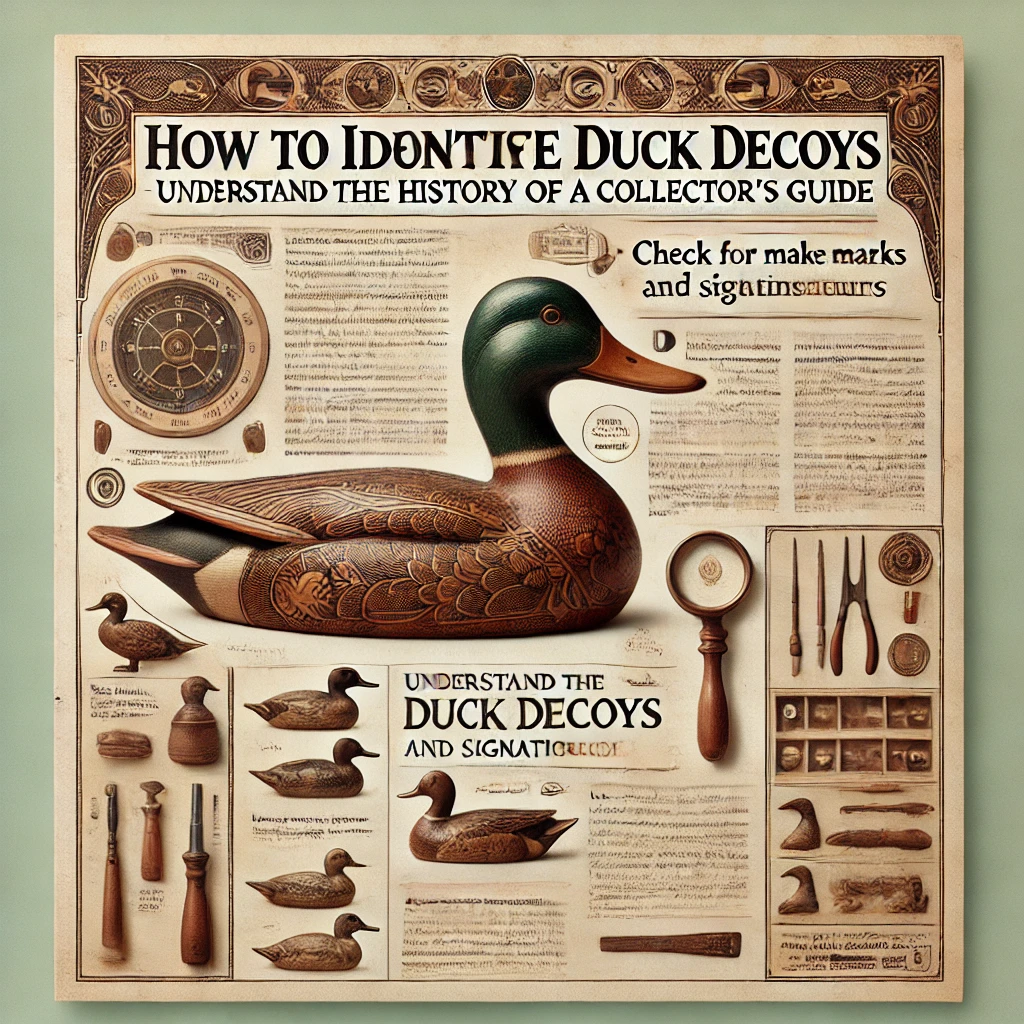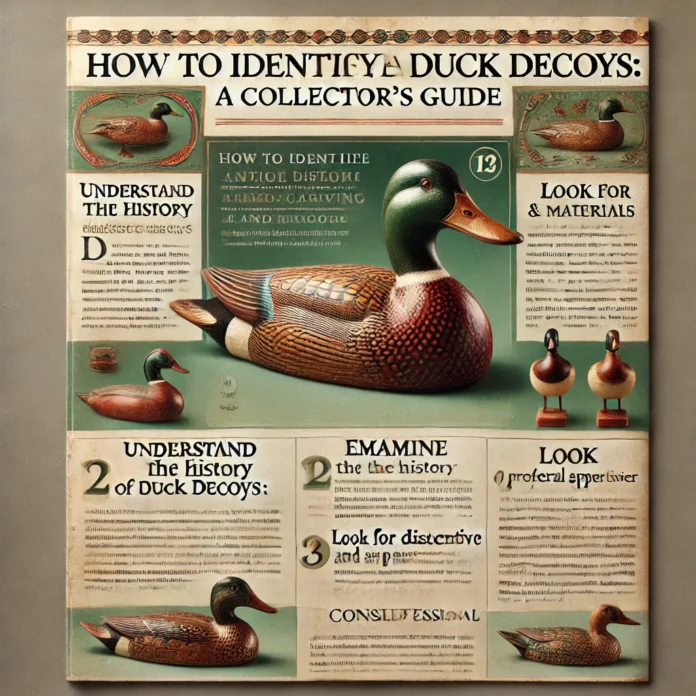Not some coolly made exhibits, but the antique duck decoys are the real treasures of the past, each with its own unique story. In any case, whether you are a regular collector or a passionate fan, learning how to identify antique duck decoys can be a very interesting task. This explanation will teach you how to identify antique duck decoys by approaching the correct process of old duck decoy checking to get relative answers and valuation.
Understand the History of Duck Decoys
Duck decoys have been attracting waterfowl for centuries because of hunters. These decoys, however, have also taken on the status of being collectible art. Originating from early American settlers, decoys were often handmade from wood, and over time, their craftsmanship evolved. Some of the most well-known antique decoy makers came from regions such as the Chesapeake Bay, Long Island, and the Midwest, specifically Michigan.
Examine the Materials Used
Surface examination of the material is one of the first things to do when identifying an antique duck decoy. They were hand-carved with the woods such as pine, cedar, and tupelo. Pine, being soft, may reveal wear or fragility, whereas cedar and tupelo are usually more reliable and are generally smooth.
Look for Distinctive Carving and Paintwork
The decoy’s carving is a sure pointer to its realness. Unlike the old handmade decoys, there was depth of detail in the carving which can tell you which period it is. Most of the Old decoys are pretty plain to look at, apart from a few that look like they might have been just a bit updated; however, modern ones are more symmetrical and have better curves.
Invalid eyes, bills, and wings, however, were given a lot of attention. Feature the face of the decoy among the others. Look for old decoys that have the eyes skillfully painted by hand. Some of the time, the newer ones will have had glass eyes put into them. They may not have had a smooth sequence of the brush strokes, or sometimes, there are obvious signs of agedness in the paint, telling you it may be antique.

Also Read: The Rise of Gonewild Influencers in Authentic Content Creation
Check for Maker’s Marks and Signatures
Most famous decoy creators usually placed their carvings to W Carvers and brand. One of the mostly obtained designs was “W” or “WB” which were highlighted by the Ward Brothers who were among the most prominent makers in the 20th century.
With the spotting of a signature or maker’s mark, the old duck can really be worth a lot. The Decoy is also to be studied along with the background of the maker and that of the time period to know more about the provenance of the decoy that will also uncover how to identify antique duck decoys.
Inspect the Condition and Wear
Battle-scarred duck decoys are those which result from natural aging, and some of them acquire historical patina from many years of use. Among them are chips, small cakes, and paint cracks. The cracks usually on the nose and body generally make the decoy more natural.
To the contrary, the decoy in a good condition can possess a higher value than the one in a bad condition. Handicrafts are renovated excessively which makes it lose its initial meaning could be said of repaired or repainted objects which may lose some quality and eventually the originality. The focus is to obtain a decoy with a blend of both age and wear and tear that has been made to the most excellent degree of workmanship when it comes to the question of how to identify antique duck decoys.
Consult a Professional Appraiser
To verify the genuineness and worthiness of a duck decoy, you should contact a professional appraiser. Appraisers can give information about the decoy’s manufacturer, the time it was made, and the state it is in. Quite a big number of collectors go to the specialists in duck decoys or the auction places that deal in vintage hunting items as well.

Conclusion
Being able to tell the age of a duck decoy and the decade it comes from really would require a person with a trained eye, who knows about old tendencies, and can comprehend the materials and expertise which mark a specific period. Even if it is just a matter of time and getting familiar with the area, the idea of finding a rare and worthy decoy is the reward. Make sure that you control the materials used, observe the carving and paintwork, search for autographs, and master the regional styles which could help you identify antique duck decoys. With these hints as your buying and selling guides, you can embark on your journey into the world of how to identify antique duck decoys. Enjoy collecting!
Also Read: How Long Can Carne Asada Stay in the Fridge?


